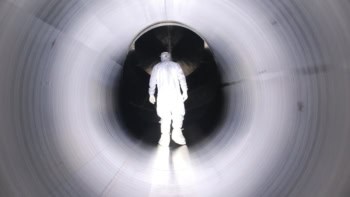Physicists from the BaBar experiment at Stanford in the US have directly detected charge-parity violation for the first time. CP violation is thought to explain why the universe is composed entirely of matter, even though equal amounts of matter and antimatter should have been created in the Big Bang. 'The result determines directly for the first time the magnitude of the fundamental matter-antimatter asymmetry in Nature' says Paul Harrison of Queen Mary College in London and chair of the BaBar steering committee in the UK.
Matter-antimatter asymmetry is normally expressed as a parameter sin 2 beta. If there was no asymmetry, then sin 2 beta should be zero. In a paper submitted to Physical Review Letters on 5 July, the BaBar team report that sin 2 beta = 0.59, with error bars of 0.14. There is only a 3 in 100 000 chance that the effect is due to statistical fluctuations. The Standard Model of particle physics predicts sin 2 beta = 0.72.
Earlier this year BaBar and the rival Belle experiment in Japan reported values of sin 2 beta that were both consistent with zero and the standard model. Both experiments measure the decay of B-mesons produced in collisions between electron and positron beams. The BaBar collaboration, which is based at the Stanford Linear Accelerator Center in California, involves over 600 physicists from nine countries. CP violation was first observed indirectly in the decay of neutral kaons in 1964.



